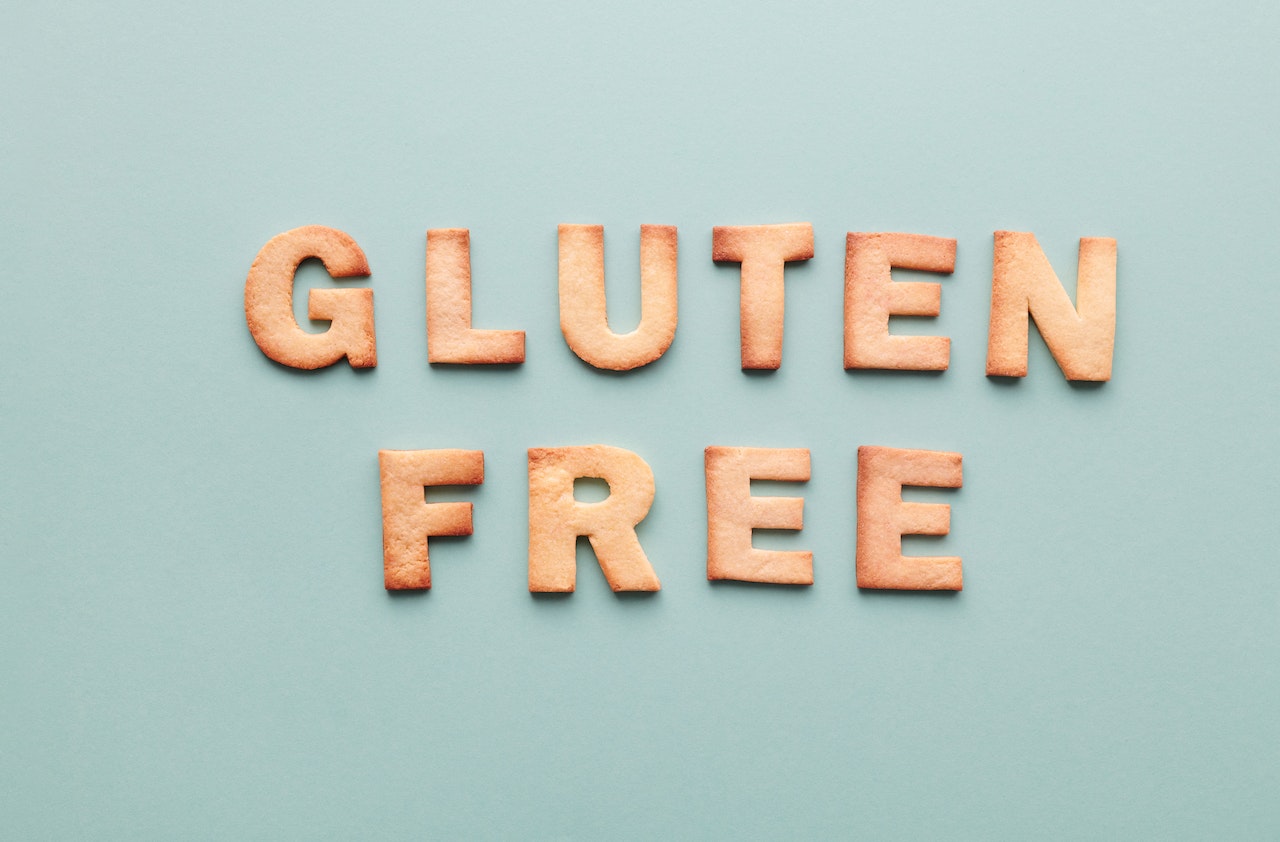- Cashews
- Cakes
- Croissants
- Crumpets
- Egg noodles
- Muffins
- Regular noodles
- Pastries
- Pasta made from wheat
- Sourdough
- Udon noodles
- Wheat bread
- Wheat cereals
- Wheat flour
- Wheat rolls
- Wheatgerm
- Barley
- Bran cereals
- Couscous
- Gnocchi
- Muesli
- Pistachios
- Rye
- Semolina
Condiments, Sweets, Sweeteners and Spreads
- Agavae
- Fructose
- Gravy, if it contains onion
- High fructose corn syrup (HFCS)
- Honey
- Milk chocolate
- Relish
- Stock cubes
- Sugar-free sweets containing polyols – usually ending in -ol or isomalt
- Inulin
- Isomalt
- Maltitol
- Mannitol
- Sorbitol
- Xylitol
Prebiotic Foods
- The follow items can be added to yoghurts, snack bars etc:
- FOS – fructooligosaccharides
- Inulin
- Oligofructose
Drinks
- Beer – if drinking more than one bottle
- Dandelion tea
- Fruit and herbal teas with apple added
- Fruit juices in large quantities
- Fruit juices made of apple, pear, mango
- Orange juice in quantities over 100ml
- Rum
- Sodas containing High Fructose Corn Syrup (HFCS)
- Soy milk made with soy beans – commonly found in USA
- Sports drinks
- Tea, fennel
- Tea, chamomile
- Tea, oolong
- Wine – if drinking more than one glass
Dairy Foods
- Buttermilk
- Cream cheese
- Cream
- Custard
- Ice cream
- Milk – cow, goat and sheep
- Sour cream
- Yoghurt – including greek yogurt
Yeah, it’s quite a doozy.
The specifics of avoidance and inclusion in your diet can always be tested. What you’ll then do is eat the following foods for the next 2 months.
Here’s that list, again from www.ibsdiets.com
LOW FODMAP FOODS
Low FODMAP food (good to eat food)
If quantities are given, these are the highest amount allowed.
Vegetables and Legumes
- Alfalfa
- Bamboo shoots
- Bean sprouts
- Bok choy / pak choi
- Broccoli – avoid large servings
- Brussel sprouts – 1 serving of 2 sprouts
- Butternut squash – 1/4 cup
- Cabbage – 1 serving of 1 cup
- Carrots
- Celery – less than 5cm of stalk
- Collard greens
- Corn / sweet corn- if tolerable and only in small amounts – 1/2 cob
- Courgette
- Chick peas – 1/4 cup
- Chilis – if tolerable
- Chives
- Cucumber
- Eggplant / aubergine
- Fennel
- Green beans
- Green pepper (green bell pepper)
- Ginger
- Kale
- Leek leaves
- Lentils – in small amounts
- Lettuce
- Marrow
- Okra
- Olives
- Parsnip
- Radish
- Red peppers (red bell pepper)
- Potato
- Pumpkin
- Pumpkin, canned – 1/4 cup, 2.2 oz
- Scallions / spring onions (green part)
- Silverbeet / chard
- Spinach, baby
- Squash
- Swede
- Sweet potato – 1/2 cup
- Tomato – avoid cherry tomato
- Turnip
- Yam
- Zucchini
Fruit
- Bananas
- Blueberries
- Boysenberry
- Cantaloupe
- Cranberry
- Clementine
- Dragonfruit
- Grapes
- Honeydew and Galia melons
- Kiwifruit
- Lemon including lemon juice
- Lime
- Mandarin
- Orange
- Passion fruit
- Paw paw
- Papaya
- Pineapple
- Raspberry
- Rhubarb
- Strawberry
- Tangelo
Meats, Poultry and Meat Substitutes
- Chicken
- Beef
- Lamb
- Pork
- Quorn, mince
- Turkey
- Cold cuts / deli meat / cold meats such as ham and turkey breast
Fish and Seafood
- Canned tuna
- Fresh fish e.g.
- Salmon
- Cod
- Haddock
- Plaice
- Trout
- Seafood (ensuring nothing else is added) e.g.
- Crab
- Lobster
- Shrimp
- Mussels
- Oysters
Cereals, Grains, Breads, Biscuits, Pasta, Nuts and Cakes
- Wheat-free or gluten-free breads
- Bread made from oats, rice, corn, and potato flours
- Wheat-free or gluten-free pasta
- Buckwheat noodles
- Rice noodles
- Porridge and oat based cereals
- Cornflakes – 1/2 cup
- Rice bran
- Rice Krispies
- Almonds – max of 15
- Amaranth
- Brazil nuts
- Bulgur / bourghal – 1/4 cup cooked, 44g serving
- Buckwheat
- Buckwheat flour
- Brown rice / whole grain rice
- Cornflour / maize
- Crispbread
- Corncakes
- Coconut – milk, cream, flesh
- Corn tortillas, 3 tortillas
- Hazelnuts – max of 15
- Macadamia – max of 10
- Millet
- Oats
- Oatcakes
- Peanuts
- Pecans – max of 15
- Pine nuts – max of 15
- Polenta
- Popcorn
- Potato chips, plain
- Potato flour
- Pumpkin seeds – max of 1 – 2 tbsp
- Quinoa
- Rice cakes
- Rice crackers
- Rice flour
- Sesame seeds – max of 1 – 2 tbsp
- Spelt
- Sunflower seeds – max of 1 – 2 tbsp
- Sorgum
- Tortilla chips
- Walnuts – max of 10
- White rice
Condiments, Sweets, Sweeteners and Spreads
- Aspartame
- Acesulfame K
- Barbecue sauce
- Chocolate, dark
- Chutney, 1 tablespoon
- Fish sauce
- Garlic infused oil
- Golden syrup
- Glucose
- Jam / jelly, strawberry
- Ketchup (USA) – 1 sachet
- Maple syrup
- Marmalade
- Mayonnaise – ensuring no garlic or onion in ingredients
- Mustard
- Olive oil
- Oyster sauce
- Pesto sauce – less than 1 tbsp
- Peanut butter
- Saccharine
- Soy sauce
- Sweet and sour sauce
- Sucralose
- Sugar – also called sucrose
- Tomato sauce (outside USA) – 2 sachets, 13g
- Vegemite
- Vinegar, balsamic – less than 2 tbsp
- Vinegar, rice wine
- Worcestershire sauce
Drinks
- Alcohol – is an irritant to the gut, limited intake advised:
- Beer – limited to one drink
- Clear spirits such as Vodka
- Gin
- Whiskey
- Wine – limited to one drink
- Coffee, espresso, regular or decaffeinated, black
- Coffee, espresso, regular or decaffeinated, with up to 250ml lactose free milk
- Coffee, instant, regular or decaffeinated, black
- Coffee, instant, regular or decaffeinated, with up to 250ml lactose free milk
- Espresso, regular, black
- Fruit juice, 125ml and safe fruits only
- Lemonade – in low quantities
- Soya milk made with soy protein
- Sugar free fizzy drinks / soft drinks / soda – such as diet coke, in low quantities as aspartame and acesulfame k can be irritants
- 'Sugar' fizzy drinks / soft drinks / soda that do no contain HFCS such as lemonade, cola. Limit intake due to these drinks being generally unhealthy and can cause gut irritation
- Tea, black, weak e.g. PG Tips
- Tea, chai, weak
- Tea, fruit and herbal, weak – ensure no apple added
- Tea, green
- Tea, peppermint
- Tea, white
- Water
Dairy Foods and Eggs
- Butter
- Cheese, brie
- Cheese, camembert
- Cheese, cheddar
- Cheese, cottage
- Cheese, feta
- Cheese, mozzarella
- Cheese, ricotta – 2 tablespoons
- Cheese, swiss
- Dairy free chocolate pudding
- Eggs
- Gelato
- Lactose free milk
- Lactose free yoghurt
- Margarine
- Oat milk
- Parmesan cheese
- Rice milk
- Sorbet
- Soy protein (avoid soya beans)
- Swiss cheese
- Tempeh
- Tofu
- Whipped cream
Cooking ingredients, Herbs and Spices
- Herbs: Basil, Cilantro, Coriander, Mint, Oregano, Parsley, Rosemary, Tarragon, Thyme
- Spices: All spice, Cinnamon, Cumin, Five spice, Paprika, Turmeric
- Baking powder
- Baking soda
- Cocoa powder
- Cream, 1/2 cup
- Gelatine
- Ghee
- Icing sugar
- Lard
- Salt
- Vegetable oil
Information overload I’m sure.
Bottom line, that’s what a FODMAP diet looks like.
Is a FODMAP Diet Worth It?
Depends. Do you want to feel better?
In an interview, Shepard said the following:
It’s important that people liberalize the diet to achieve the greatest amount of variety – and anyone following the process should consult with a nutritionist to ensure they’re properly guided through the second phase,” adds Shepherd, who stressed that it’s a low FODMAP diet, not a no FODMAP diet. “The underlying philosophy isn’t looking for foods that are entirely free from FODMAPs, but that rather contain a small amount of them,” she clarified.
So, based on that I’d say its worth it.
Bottom line, if you want to experience "Health As It Ought To Be” and have gone gluten-free with little results, this might be the next thing to consider.
Hope that helps your stomach woes.
Talk soon,
Dr. Wiggy
www.HealthAsItOughtToBe.com




